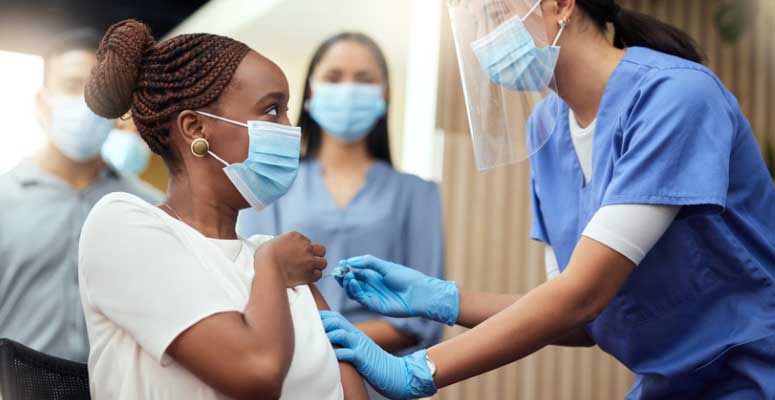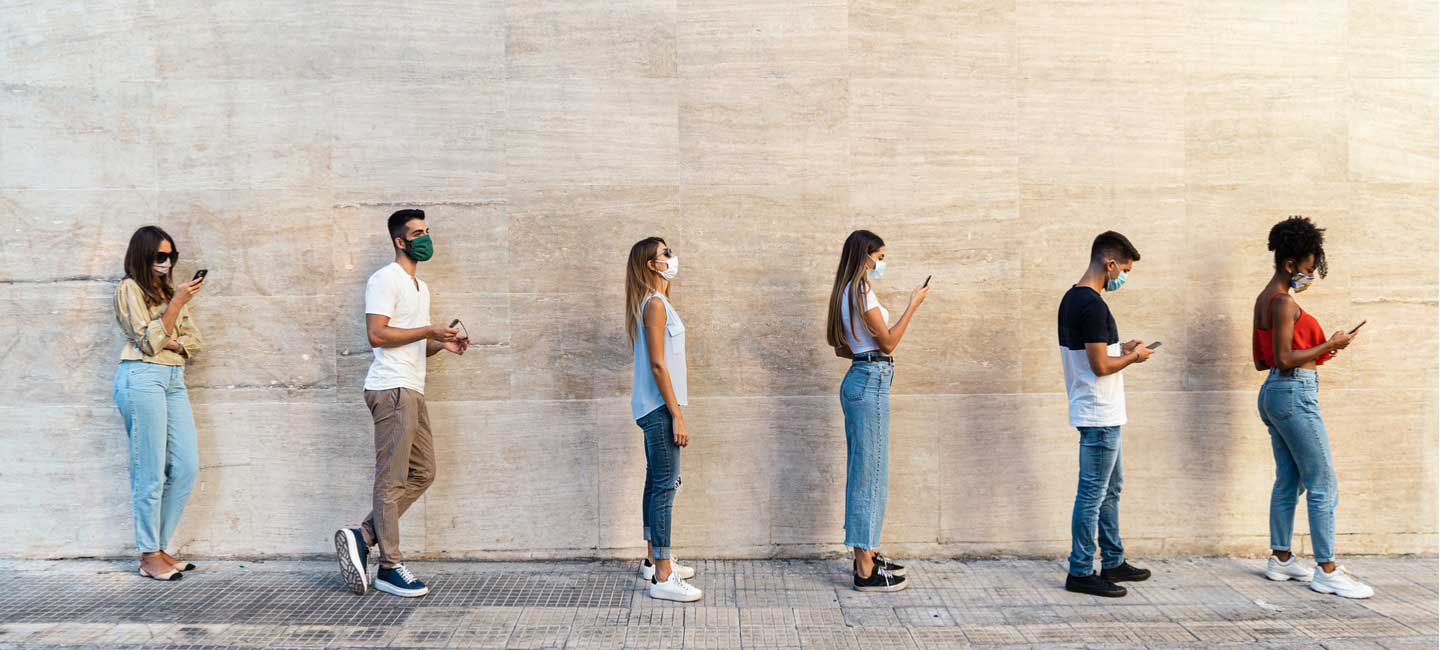CDC Relaxes Guidelines for COVID-19
As COVID-19 continues to circulate globally, the Centers for Disease Control and Prevention has loosened its COVID-19 guidelines. The reason? Vaccinations, boosters and treatments have helped reduce the severity of the disease, with less risk of hospitalization and death compared to earlier in the pandemic.
The CDC’s updated guidance no longer requires people to quarantine if exposed to the virus. The agency also no longer recommends staying 6 feet apart or screening of those who are asymptomatic.
The changes come as children return to school. Unvaccinated students who are exposed to the virus will no longer need to test frequently to stay in the classroom, known as “test to stay.” The CDC no longer recommends that schools divide students into smaller groups and limit contact between them. But schools may want to consider surveillance testing in certain instances, such as returning from school breaks.
Dr. John Greene, chair of the Infectious Diseases Program at Moffitt Cancer Center, says the changes come at the right time. “COVID-19 infection severity is significantly less in most people compared to earlier in the pandemic due to partial immunity from vaccination and prior infection with other strains of COVID,” he said.

The CDC’s Greta Massetti, Ph.D., M.P.H., agreed. “We also have a better understanding of how to protect people from being exposed to the virus, like wearing high-quality masks, testing and improved ventilation. This guidance acknowledges that the pandemic is not over but also helps us move to a point where COVID-19 no longer severely disrupts our daily lives,” she said in a statement.
The CDC’s new recommendations come 2½ years into the pandemic where more than 1 million Americans have died, according to the World Health Organization. But many have already changed their day to day despite the highly contagious variants of omicron.
The new guidance from the CDC is not a major overhaul, but it does place a greater focus on individuals making their own decisions about their level of risk and how to address it. It also no longer distinguishes between those who are fully vaccinated and unvaccinated, streamlining guidance due to the high levels of population immunity in the U.S. from vaccination, past infections or both.
But what does the update mean if you have a weakened immune system from cancer? Greene recommends the following for immunocompromised cancer patients:
- Continue to wear a high-quality mask around others in crowded areas.
- Stay up to date on vaccination, boosters and passive immunity like Evusheld if indicated. “We likely will have a COVID-19 booster to offer to high-risk groups by October that will have better activity against currently circulating variants of the omicron strain,” Greene said.
- Avoid poorly ventilated confined rooms when others are present.
- Get tested if exposed or symptoms develop so that the proper treatment can be given as soon as possible, which reduces the severity of infection if you test positive.
Moffitt has given Evusheld to more than 930 immunocompromised cancer patients who are unlikely to mount an immune response with vaccination, as well as to patients exposed to COVID-19 who are unlikely to mount an effective immune response.

As the CDC relaxes its COVID-19 guidelines, cancer patients must be vigilant and stay up to date on vaccination, boosters and passive immunity like Evusheld if indicated.
The CDC update includes:
- Stay up to date with vaccinations to protect everyone against serious illness, hospitalization and death.
- If you are exposed to COVID-19, instead of quarantining, wear a high-quality mask for 10 days and get tested on day 5.
- Regardless of vaccination status, isolate from others when you have COVID-19. You should also isolate if you are sick and suspect that you have COVID-19 but do not yet have a positive test result. If you test positive, follow the CDC’s full isolation recommendations. If you test negative, you can end your isolation.
- If you test positive for COVID-19, stay home for at least five days and isolate from others in your home. You are most infectious during these first five days. Wear a high-quality mask when you must be around others. After five days, if you are free of fever for 24 hours without using medication and your symptoms are improving, or you never had symptoms, you may end isolation after day 5. Regardless of when you end isolation, avoid being around people who are more likely to get very sick from COVID-19 until day 11. Wear a high-quality mask through day 10.
- If you had moderate illness with shortness of breath or difficulty breathing or severe illness with hospitalization, isolate through day 10. If you have a weakened immune system, also isolate through day 10.
- If you were hospitalized or have a weakened immune system, consult your doctor before ending isolation. Ending isolation without a viral test may not be an option for you.
- After ending isolation, if your COVID-19 symptoms worsen, restart your isolation at day 0. Talk to your doctor about your symptoms and when to end isolation.
- Screening testing of asymptomatic people without known exposures is no longer recommended in most community settings.
- For social distancing, take into consideration the risk in a particular setting, local COVID-19 community levels and ventilation.
- Contact tracing should be limited to hospitals and certain high-risk group-living situations such as nursing homes.
In the coming weeks, the CDC will update guidance for health care settings, congregate settings at a higher risk of transmission and travel. Moffitt is committed to patient and employee safety and will continue screening everyone entering the facility as recommended by the CDC, the Joint Commission on Accreditation of Healthcare Organizations and the Occupational Safety and Health Administration.
With partial immunity, more effective therapy in the form of antivirals and monoclonal antibodies, and new discoveries of active agents against the virus, do these changes signal the end of the pandemic?
“Yes, we are at the beginning of the end of the COVID-19 pandemic in the sense that COVID-19 is likely with us forever and thus endemic. But it is moving toward an annual infection with constantly mutating variants just like the flu virus,” Greene said. “I believe the CDC has developed a healthy balance with personal freedoms and empowerment for each person to decide their own risk assessment and preferences with their life decisions while at the same time being considerate and responsible to ensure the health of others that they have contact with.”
Updated #COVID19 guidance to help you make informed decisions to protect yourself & others from severe illness. Knowing your risk & taking prevention steps, including vaccination & masking, can help you & loved ones from getting really sick. @CDCMMWR: https://t.co/DmfPOAPMjW
— CDC (@CDCgov) August 11, 2022



